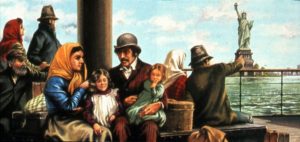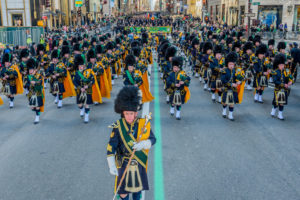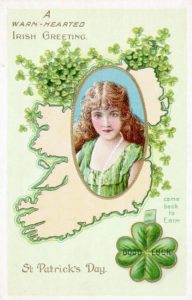-
Halloween
- The Story Behind Halloween – Lesson
- The Story Behind Halloween – Quiz
- Are You Too Old To Go Trick-Or-Treating? – Lesson
- Look out for the Blue Pumpkin – Lesson
- Is the White House Haunted? – Lesson
- Is the White House Haunted? – Quiz
- Mummies Discovered in Egypt – But That’s Nothing to Fear – Lesson
- Salem Witch Trials: When Being Called a Witch Meant Death – Lesson
- Halloween Around the World: It Isn’t Just Costumes and Candy – Lesson
- Halloween Around the World: It Isn’t Just Costumes and Candy – Quiz
-
Thanksgiving
- The Evolution of Thanksgiving – Lesson
- The Evolution of Thanksgiving – Quiz
- The Political Roots of Thanksgiving – Lesson
- The Political Roots of Thanksgiving – Quiz
- Turkey for Thanksgiving – But Why? – Lesson
- Turkey for Thanksgiving – But Why? – Quiz
- This Thanksgiving, Consider Helping the Less Fortunate – Lesson
-
Christmas
-
Easter
- Good Friday: Christ Carried Sin to the Grave – And Left It There – Lesson
- Good Friday: Christ Carried Sin to the Grave – And Left It There – Quiz
- Easter Traditions: From Rabbits to Egg Jarping – Lesson
- Easter Traditions: From Rabbits to Egg Jarping – Quiz
- Easter Monday and Egg Rolling at the White House – Lesson
- Easter Monday and Egg Rolling at the White House – Quiz
-
Federal Holidays and Observances
- New Year’s Day: Just as Political as Anything Else – Lesson
- This Presidents’ Day, Let’s Remember the Weird – Lesson
- Astounding Facts about US Presidents – Lesson
- Astounding Facts about US Presidents – Quiz
- Memorial Day: A Time of Honor and Respect – Lesson
- Memorial Day: A Time of Honor and Respect – Quiz
- From Decoration Day to Memorial Day – Lesson
- From Decoration Day to Memorial Day – Quiz
- Who Was the Poppy Lady, Moina Belle Michael? – Lesson
- Who Was the Poppy Lady, Moina Belle Michael? – Quiz
- The Origins of Flag Day – Lesson
- The Origins of Flag Day – Quiz
- America’s Flag – An Evolved Banner for an Ever-Changing Country – Lesson
- America’s Flag – An Evolved Banner for an Ever-Changing Country – Quiz
- Celebrating the 4th of July – Lesson
- Celebrating the 4th of July – Quiz
- Who Should We Thank for Labor Day? – Lesson
- Who Should We Thank for Labor Day? – Quiz
- Constitution and Citizenship Day – Lesson
- Constitution Day – The First Day of Constitution Week – Lesson
- Constitution Day – The First Day of Constitution Week – Quiz
- The Political Origins of Columbus Day – Lesson
- The Political Origins of Columbus Day – Quiz
- Columbus Day or Indigenous Peoples’ Day? – Lesson
- Columbus Day or Indigenous Peoples’ Day? – Quiz
- Veterans Day: A Day to Honor Those Who Served – Lesson
- Veterans Day: A Day to Honor Those Who Served – Quiz
- Marion Robert Goff: A Soldier’s Tale on D-Day – Lesson
- Marion Robert Goff: A Soldier’s Tale on D-Day – Quiz
- Independence Day: The History You Might Not Know – Lesson
- Independence Day: The History You Might Not Know – Quiz
-
Other Traditions
- Valentine’s Day Love Poems – Lesson
- Love Poems for Valentine’s Day – Lesson
- Who Was St. Valentine? – Lesson
- Who Was St. Valentine? – Quiz
- No Love for Valentine’s Day in the East – Lesson
- No Love for Valentine’s Day in the East – Quiz
- Beware the Ides of March – But Why? – Lesson
- Beware the Ides of March – But Why? – Quiz
- St. Patrick’s Day: A Celebration of the Irish – Lesson
- St. Patrick’s Day: A Celebration of the Irish – Quiz
- May Day: Dancing ‘Round the Maypole – Lesson
- May Day: Dancing ‘Round the Maypole – Quiz
- Cinco de Mayo: Celebrating Mexico’s Victory in Puebla – Lesson
- Cinco de Mayo: Celebrating Mexico’s Victory in Puebla – Quiz
- Mother’s Day: The Anti-War Effort Turned Holiday – Lesson
- Mother’s Day: The Anti-War Effort Turned Holiday – Quiz
- Father’s Day: More Than Just a Day for Ties – Lesson
- Father’s Day: More Than Just a Day for Ties – Quiz
- Presidential Fathers: Responsible for Their Kids and the Country – Lesson
- Presidential Fathers: Responsible for Their Kids and the Country – Quiz
- Proof of the Hanukkah Story Found? – Lesson
- Proof of the Hanukkah Story Found? – Quiz
- Roses Are Red, Violets Are Blue – April Celebrates Poetry, Too – Lesson
- Roses Are Red, Violets Are Blue – April Celebrates Poetry, Too – Quiz
St. Patrick’s Day: A Celebration of the Irish – Lesson

(Photo by Drew Angerer/Getty Images)
How did the Irish tradition become a worldwide celebration?
When we think of St. Patrick’s Day, we imagine wearing green, leprechauns looking for their pot of gold at the end of the rainbow, and eating corned beef and cabbage. But where did these traditions come from?
The Birth of St. Patrick’s Day
The Irish have been observing this day since the ninth or tenth century as the Roman Catholic feast day of St. Patrick. Instead of pinching people for not wearing green, they spent time in Church during the mornings and held a feast later in the day. St. Patrick is celebrated for bringing Christianity to Ireland.
The St. Patrick’s Day parades we know today didn’t begin in Ireland, though. The first of these celebrations actually happened in America. Ireland has a large diaspora – natives who have moved to other countries. According to some sources, 70 million people worldwide claim Irish heritage, while only about 6 million people live in Ireland today!
Many Irish people left their native land over the centuries due to famine, poverty, and religious discrimination. Ireland was conquered by Britain, which tried to impose its own beliefs in the area. The Irish also played a big role in spreading the British Empire, with many moving to colonies in the New World.

Irish (in tall hats) and European immigrant families arriving in New York harbour and approaching Ellis Island where they would be processed. Circa 1900. (Photo by Universal History Archive/Getty Images)
Irish migrants began arriving in America during the 1600s, many of them as indentured servants – servants who signed a contract to work for a certain number of years in exchange for transport, food, and shelter.
The first official immigrant to New York’s Ellis Island was also an Irish girl, named Annie Moore. She was the first of about 3.5 million Irish who came through Ellis Island. They were not always welcomed due to their Catholic religion and poverty. Even so, the Irish population in America grew, and today about 32 million Americans claim Irish heritage.
The Evolution of St. Patrick’s Day
It’s believed that on March 17, 1601, the first St. Patrick’s Day parade was held in St. Augustine, Florida. It was a Spanish colony at the time but had an Irish vicar. According to historian Dr. J. Michael Francis:
“In March of 1601, St. Augustine’s residents gathered together and processed through the city’s streets in honor of an Irish saint, who appears to have assumed a privileged place in the Spanish garrison town. Indeed, during these same years, St. Patrick was identified as the official ‘protector’ of the city’s maize fields.”

(Photo by Erik McGregor/LightRocket via Getty Images)
For a long time, it was thought New York held the first St. Patrick’s Day parade, but theirs didn’t happen until over a century later, in 1762. Irish soldiers serving in the British military marched in New York City to honor their patron saint and homeland. The British ruled Ireland at the time, and tried to suppress Irish national identity. However, in New York, the Irish were free to speak their own language (Gaelic), sing Irish songs, and display their national symbols.
The event sparked parades like those we have today, but the world’s biggest St. Patrick’s Day celebration still happens each year in New York City.
St. Patrick’s Day Symbols
The color green was not originally linked with the day. In fact, knights in the Order of St. Patrick wore a color known as St. Patrick’s blue. It is thought the color green gained this association around the 18th century, stemming from the supporters of Irish independence, who used green to represent their cause.

St. Patrick’s Day greeting card (Getty Images)
Corned beef and cabbage are a traditional dish for the holiday. However, in Ireland, a type of bacon is actually the customary meat for the day. Corned beef came about in the late 19th century when Irish immigrants couldn’t afford the traditional fare and so they swapped it with corned beef, which they bought from their Jewish neighbors in New York City’s Lower East Side.
According to the legend, St. Patrick used the three leaves of a shamrock to explain the Holy Trinity (Father, Son, and Holy Spirit). A shamrock is a three-leaf clover, not to be confused with the four-leaf clover. The Irish are often called “lucky” due to their history of mining in the American gold rushes, but this is nothing to do with four-leaf clovers, which are rare and so finding one is considered lucky.
Another link the Irish have with gold is the leprechaun – a mythical fairy or dwarf who hides a pot of gold at the end of a rainbow. These mischievous creatures often make an appearance at St. Patrick’s Day parades.